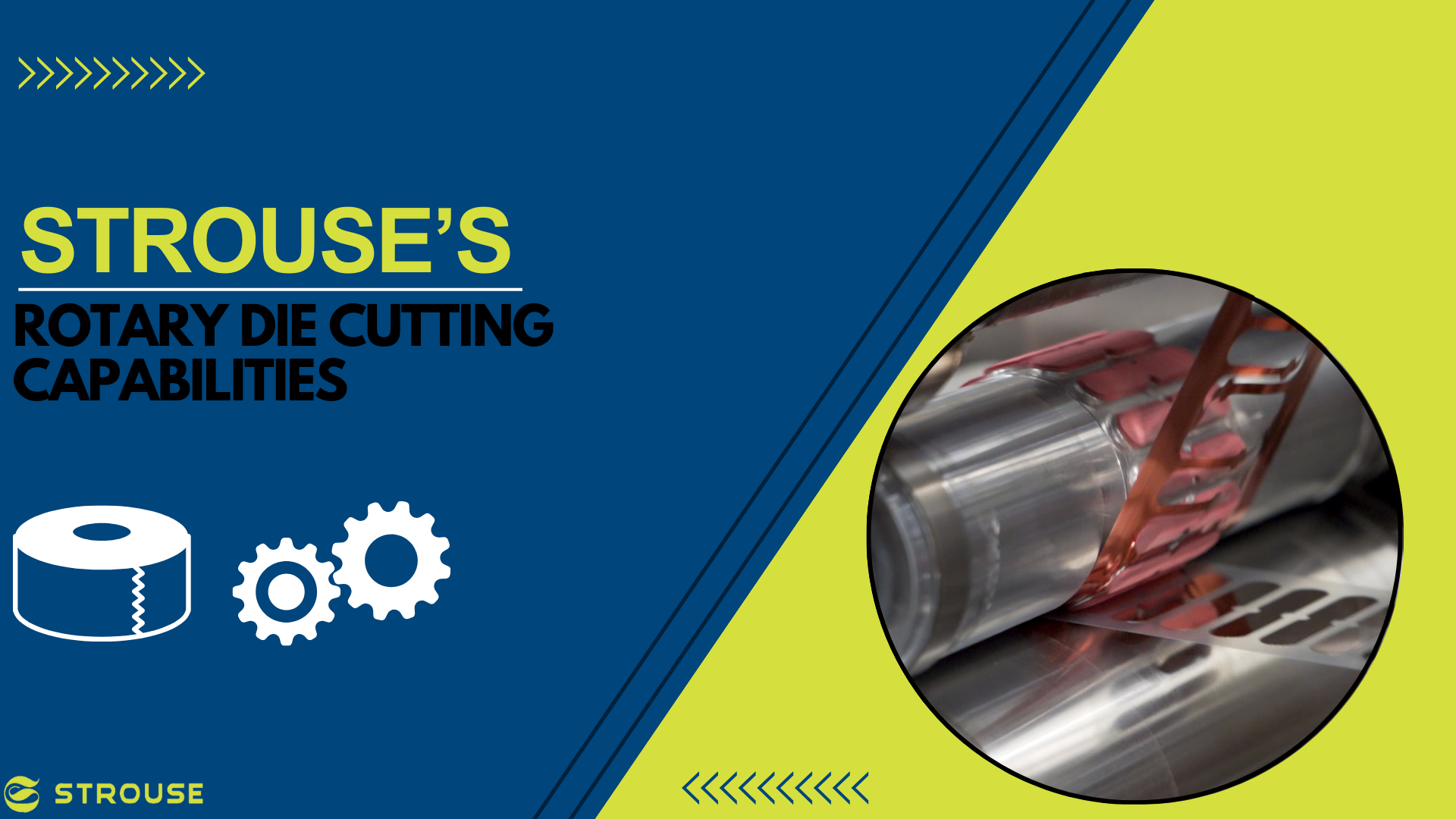If you’ve been scouring the internet for potential manufacturing solutions, you may have come across die cutting.
Die cutting is a means of part production that uses flexible materials to create identical parts.
One of our goals as a company is to build consistent, high-quality products using die cutting processes. However, while die cutting is successful in many instances, it isn’t the best choice for everyone.
Today, we’ll discuss the projects that benefit the most from die cutting and potential alternatives so you can decide whether it sounds right for you.
What is the Die Cutting Process?
Die cutting is the process of cutting out shapes from a flexible material. It can be done using a cylindrical rotary die cut tool, flat bed press, or laser cutting.
EXAMPLES OF DIE CUTTING
The die cutting process can be used to make many surprising die cut applications in a wide range of industries
Foam gaskets are an example of applications that are often created through die cutting. By using rotary die cutting to cut foam rolls, companies produce large quantities of foam gaskets for medical, automotive, and other needs.

When To Use Die Cutting Services
Die cutting is a way to produce parts made from flexible materials in an accurate and consistent manner. If you have a custom product design and need product components for your business, die cutting services are an excellent source.
Die cutting offers cost-effective solutions for larger orders and mass production, making it a highly viable option for businesses looking to optimize their budget and achieve cost savings.
You might already have an idea in mind for the number of parts you’re looking for or the rate at which you’re looking to increase your capacity. Growth is crucial for a successful business, and if you’ve thought about scaling up your volume and operations, die cuts are worth consideration.
Lastly, die cuts can have features such as tabs, making them far quicker and easier to apply than cutting tapes. Using die cut parts will help you increase your product application and afford more opportunities for automation.
Reasons You Might NOT Use Die Cutting Services
While die cutting is an extremely valuable method for part production, certain projects aren’t conducive to the die cutting technical aspects, planning period, and budget.
1. TECHNICAL ASPECTS
Die cut parts are often precise, but your design’s part tolerances might not suit the capabilities of your converter. At the end of the day, the tolerances may also be too tight for feasible die cutting given the material you’ve chosen. At some point, you’ll have to use injection molding if the tolerances get too tight.
Before you send in your design, you’ll want to ensure that the part tolerances listed in your drawing are necessary rather than just the title block tolerances. This could save both you and your converter time and money.
2. PLANNING PERIOD
Planning ahead is essential for die cutting. Custom die cut parts are not readily available off the shelf and require manufacturing based on your specifications.
Sourcing materials from adhesive suppliers can result in lead times ranging from weeks to months, depending on the specific material and the quantity you want to order. Therefore, if you have a tight deadline or require a large quantity of custom die cuts in a short timeframe, it may be challenging to find suitable solutions.
3. BUDGETING AND QUANTITY
Another limiting factor for some might be the cost of a die cut. The price of die cut parts largely depends on the economies of scale, so generally speaking, larger orders have a lower price per part.
Strouse doesn’t have a minimum order quantity for parts, but small volumes run the risk of having a more substantial price-per-part for a one-time purchase order. While we do laser die cut samples for smaller volumes, we primarily focus on business-case solutions.
Now that you know more about what could limit a project from die cutting, you probably have an idea of whether it suits your intended application.
Keep in mind that you might want to check if you have the designs and preparation in place to ensure you’re ready to talk to an adhesive converter.
Different projects are at different stages in production and that you might still be at the point of working on your design before you reach out for die cut samples.
If you can confidently say you’ve got a design and an application plan, then it might be time to get your part evaluated for die cutting. Are you interested in learning more? Check out our Buyer’s Guide for more information.

